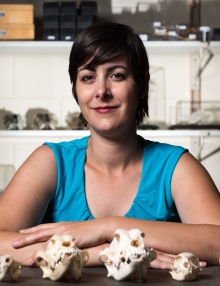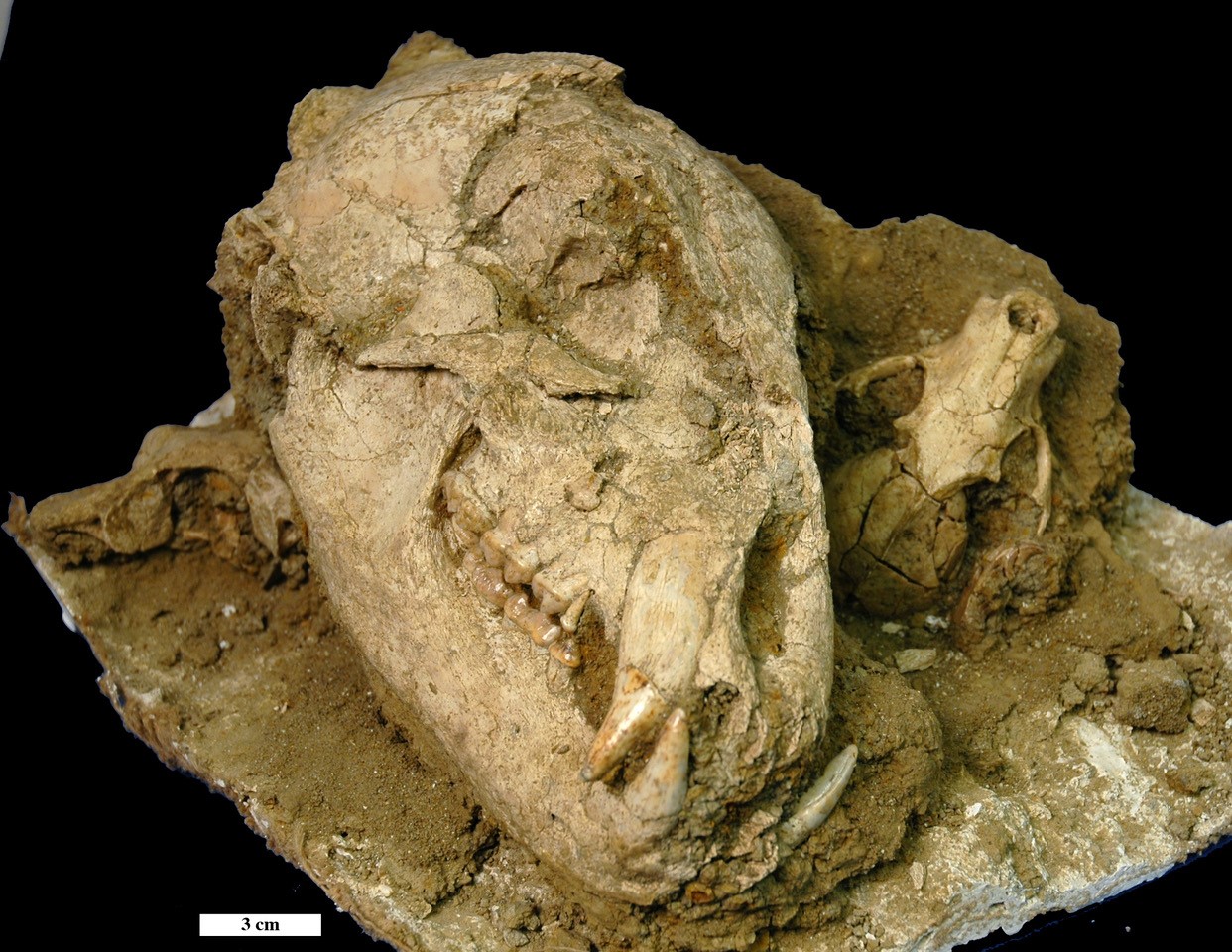Walking along the Tech Green, you are likely to see squirrels, birds, and the occasional chipmunk scurrying along among passing students. These small critters seem to be thriving in urban environments across the world, but are these the same animals you would see if you took a walk in the same spot 200 or even 2,000 years ago?
Assistant professor Jenny McGuire and former postdoc Silvia Pineda-Munoz, of the Spatial Ecology and Paleontology Lab in the Schools of Biological Sciences and Earth and Atmospheric Sciences at Georgia Tech, sought to find out in their latest research. They analyzed fossils spanning 11,700 years to investigate how different animal species have changed their habitats as a result of human activity.
“Humans have expanded, but they haven’t expanded homogenously across North America – we are where it’s nicer to live,” explains Pineda-Munoz, who is currently a post-doctoral fellow at Indiana University. “So, it got me thinking about this habitat selection from a human perspective. Knowing that we’re really displacing animals, plants, and all sorts of organisms from their habitats, have their habitat selections changed and can we actually compute that?”
To compute potential changes in habitat selections, Pineda-Munoz and colleagues studied the fossil records of 46 species, representing roughly one quarter of the mammals present in the lower 48 states. These fossil records spanned from the end of the ice age to present day, covering events like the agricultural expansion of Native Americans, the arrival of European settlers, and the Industrial Revolution.
With these records, Pineda-Munoz, McGuire, and their colleagues were able to calculate how human activity has shifted the habitat selection of different mammals. As was expected, they found that most of the studied species – roughly 74% – changed their habitat after the start of the Industrial Revolution. Unexpectedly, however, not all mammals were affected equally.
“I was really surprised by what we found,” says McGuire. According to their results, the mammals’ diet and body size were big predictors of whether they were facilitated or deterred by human activity. “I was expecting that most species would have been excluded from the climates that they normally would have liked to live in, and we did find that especially for the larger species. But what I wasn't expecting was all these small mammal species to be living outside of their historic climate range, and to have been facilitated so much by human impacts and anthropogenic change.” While larger species like bison and cougars were pushed out of their preferred climates, smaller mammals expanded into regions with human settlements. “That was very surprising, I think that's a really interesting result that we ended up with.”
Why are smaller mammals thriving within the expanding footprint of humans? There are several theories. “We haven't specifically tested this,” says Pineda-Munoz, “but I think it also has to do with the fact that we are losing some competitive interactions between mammals or other organisms.” McGuire has another theory, explaining that “we're creating this increasing dimensionality of the landscape.” By building cities and plowing fields, we’ve created plenty of nooks and crannies for small mammals to live. But, as McGuire points out, “for the large species, they can't hide. They can't fit into the little nooks and crannies and cohabitate with us.”
This has marked impacts on animal conservation, particularly for large species. “Just looking at the climates in which species live in today is not sufficient to understand where they can and should be living,” explains McGuire. To understand how best to protect larger species from human activity and the threat of climate change, we should use data from the past. “You can learn a lot from near short-term studies, like how is something responding over the last five years? But you can't really fully understand how something is going to respond to the magnitude and the rate of change that's going on right now with things like climate change and the expansion of human footprints, unless you really get a long term, deeper time perspective on that.”
For More Information Contact
Audra Davidson
Communications Assistant
College of Sciences
davidson.audra@gatech.edu





